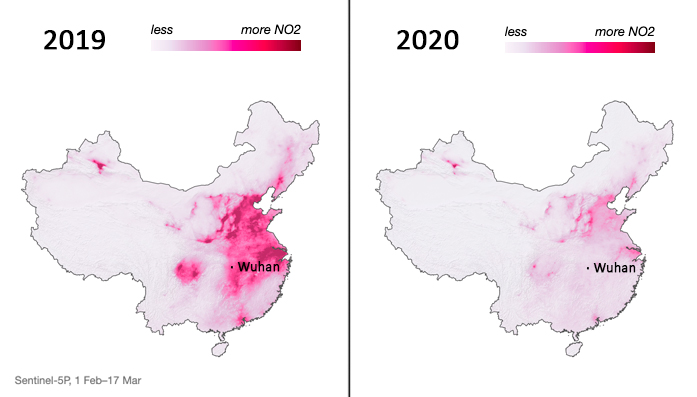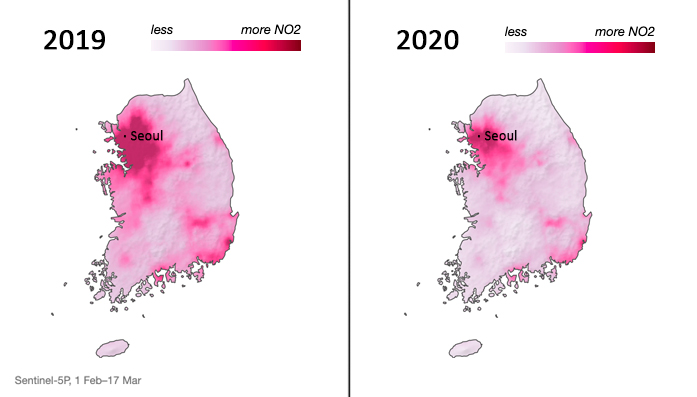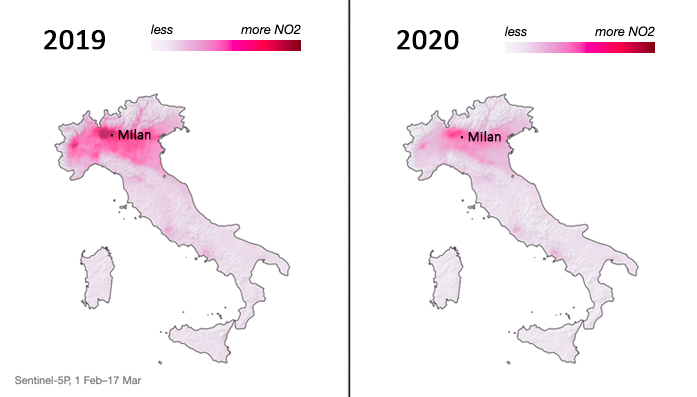The coronavirus pandemic has rocked entire societies and, when the lockdown is over, we will be faced with a multitude of questions about which social, economic, health, educational or even geopolitical model will come to set society's new rhythm.
However, in the midst of all this uncertainty, an unexpected beneficiary of the coronavirus has emerged — the planet. This is thanks to air quality improvements in many cities during this period and a reduction in greenhouse gas emissions responsible for climate change.
According to some experts, this has inadvertently turned out to be the largest-scale experiment ever seen in terms of reducing industrial emissions. This "trial run", if we can call it that, represents what could be achieved in the future if all governments were to take global measures to develop a low-carbon economy and tackle the main causes of the climate emergency once and for all.
During the past few weeks of self-isolation, since the novel coronavirus disease, COVID-19, began spreading in China and to other countries, data from ESA satellites (European Space Agency) has revealed significantly lower levels of nitrogen dioxide, NO₂, than in the same period last year.
Let's take a look at some examples of how emissions have fallen:
China, less emissions during the coronavirus crisis
The Chinese city of Wuhan had been subject to a strict lockdown of all its activities and a travel ban for its more than 11 million inhabitants since the end of January due to the novel COVID-19 coronavirus. Wuhan, a busy urban centre, is home to hundreds of factories supplying car parts to global supply chains. According to NASA, nitrogen dioxide levels across eastern and central China have been between 10 % and 30 % lower than normal.

South Korea and pollution reduction
In South Korea, another of the first countries to be affected by coronavirus and where steps to curb its spread were taken more quickly, NO₂ levels also fell drastically. South Korea's air is polluted by high emissions from its large fleet of coal-fired power plants and from the industrial facilities of its neighbouring country, China.

Italy, lower emissions in northern the country
Northern Italy is one of the worst affected European areas in the coronavirus crisis and the restrictive measures put in place, both related to industrial activities and the movement of its citizens, have been increasingly stringent. This Italian region is one of Western Europe's pollution hotspots due to its dense cluster of factories. Since 9 March, NO₂ levels in Milan and other parts of northern Italy have fallen by approximately 40 %, most likely due to the industrial standstill and reduced traffic. This figure represents most of the nitrogen dioxide emissions in Europe.

Coronavirus, a reality check
Perhaps one of the reality checks that coronavirus has given us is dispelling the myth that we are invulnerable to anything that the planet might throw at us. Climate change, along with all its consequences, is part of this. A warning that either we prepare ourselves or accept that, if we don't, our reactive measures will only serve to prevent a lesser evil.
If we are hoping that a vaccine for COVID-19 will be found and that the virus be defeated, we must also have faith that governments, the private sector and civil society alike will start taking decisive steps against climate change. And not only through science, but also through social cohesion, which is proving to be exemplary throughout this pandemic.
We have the potential to tackle climate change
In the face of the pandemic crisis, there are conflicting views about the world that we will build when it is all over. Some envision a contingency period that may delay efforts to fight climate change. However, many believe this historic moment presents an opportunity to make a real environmental U-turn and invest in global policies that consider climate change a priority.
Over the past ten years, greenhouse gas emissions have increased by about 1 % each year. According to the United Nations Environment Programme (UNEP), 2020 is the crunch year for countering this increase. We need to reduce emissions by 7.6 % per year over the next decade to ensure that the temperature rise remains below the 1.5ºC red line.
Will the reduction in emissions caused by coronavirus be only temporary? Will this trial period help us to cope with the climate emergency or will the world return to business as usual when all this ends?
The data that we are recording is only a limited view and, in fact, experts must study it over a longer period to confirm whether a pattern exists. But that it leads us to think about the future and that there is potential for us to change the current industrial model.
Fuentes: The Guardian, Wired, El Mundo, CNN